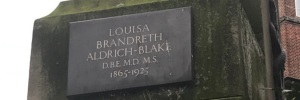Charles Waterton, an acclaimed 19th-century English naturalist, is best known for his natural history work and his South American journeys. His intriguing essay on natural history reveals a side of rat behaviour rarely seen, hinting that under certain conditions, these animals might feed on sleeping humans. This post unpacks the societal history of this claim, exploring its implications and illuminating the intricate bond between humans and rats.
Charles Waterton and His Impactful Essay
In the 19th century, a period of swift scientific advancements, Charles Waterton crafted his Essay on Natural History. At the same time, Europe was undergoing rapid urbanization, leading to more interactions between humans and rats. Rats, capable of thriving in crowded and unsanitary urban conditions, became a common sight in households and public spaces.
The Relationship Between Humans and Rats in Waterton’s Time
During Charles Waterton’s era, the dynamic between humans and rats was mainly driven by fear, disgust, and fascination. Rats, often seen as disease carriers and emblems of decay, were the subjects of Waterton’s essay, which aimed to clarify rat behaviour scientifically and debunk the myths and superstitions that abounded.
Charles Waterton’s Insights into Rat Behaviour
In his prominent essay, Charles Waterton dived deep into the study of rat behaviour and biology. He combined his observations with those of other naturalists, creating a comprehensive portrait of rat anatomy, dietary habits, and adaptability to diverse environments.
Waterton noted that rats, in rare cases, “might attempt to feed on sleeping humans.” Historical accounts and anecdotes back up his claim, indicating that in dire situations, rats might nibble on fingers or toes, usually causing minor injuries.
Charles Waterton’s Claim: Repercussions and Impact
Charles Waterton’s assertions sought to underline the potential dangers rats could pose, thus heightening public fear and caution. The perception of rats as threats persisted into the early 20th century, influencing public policies and leading to efforts to control rat populations.
Moreover, Waterton’s observations offer invaluable insights into the broader field of human-animal relations. His essay highlights the complex dynamics between humans and rats, demonstrating a relationship marked by mutual adaptation and conflict.
Charles Waterton’s Lasting Influence: Our Perception of Rats
Charles Waterton’s essay played a pivotal role in shaping our understanding of rats. His observations on rats feeding on humans underlined the animals’ adaptability and resourcefulness. However, they also stressed the importance of improving sanitation and public health measures to control their spread.
Changing Perspectives: From Fear to Fascination
While rats were seen as threats during Charles Waterton’s time, public opinion has gradually shifted. Nowadays, we acknowledge rats for their intelligence and their contribution to scientific advancements, especially in medical research. This evolution from fear to fascination mirrors the dynamic nature of our relationship with rats, shaped by scientific discoveries and societal changes.
Charles Waterton’s Enduring Impact
Today, Charles Waterton’s observations still hold relevance. His work expanded our knowledge about rats, prompting a change in our perception and interaction with these creatures. Waterton’s study continues to bear relevance, emphasizing the lasting importance of his contributions to natural history. Ultimately, Waterton’s essay on rat behaviour has transformed our relationship with these creatures from fear and revulsion to respect and intrigue, offering us valuable insights into not only the life of rats but also the ever-changing dynamics of human-animal relationships.




